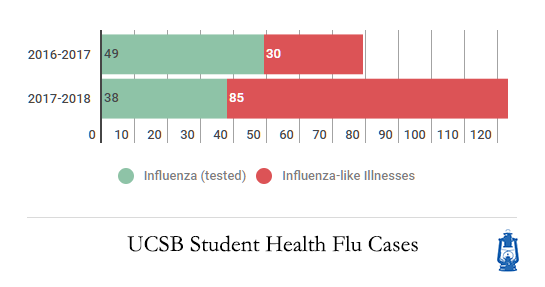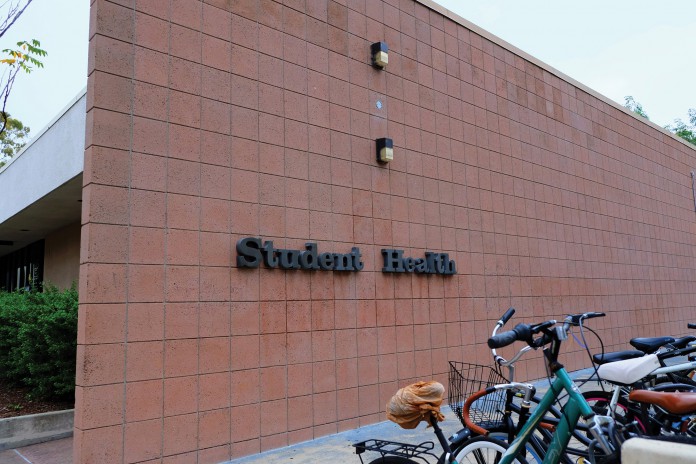Dylan Goldman
Staff Writer
National trends have indicated one of the worst flu seasons in 10 years with record numbers of hospitalizations for influenza-like illnesses. As the most recent Santa Barbara County Public Health Department and UCSB Student Health reports show, the Gaucho community is not immune to the outbreak.
UCSB Student Health Services Executive Director Dr. Mary Ferris commented and provided data on this year’s flu season, including respiratory diagnoses, a general term describing patients with all encompassing symptoms—cold, sore throat, or a sinus problem—but do not exhibit specific symptoms to the flu. The respiratory diagnoses in total for the 2017-2018 year is 1,411, while the number was 1,376 last year in 2016-2017.
The “flu season” is a loosely defined term that refers to the time when doctors report a spike in the number of patients that see them for influenza-like illnesses. The season typically starts in October, peaks in December or January, and lasts until May sometimes.
“Although the total numbers remain the same, we have more than doubled the number of ‘Influenza-like illness’ that is being diagnosed in December and January, and the impression from our doctors and nurses at Student Health is that we are definitely seeing an increase in flu cases this year,” Ferris said.
While Student Health saw 30 patients for influenza-like illnesses (ILI) in 2016-2017, doctors have seen 85 total patients for ILI in 2017-2018 so far.
Nationally, 6,500 people were hospitalized for the flu this year, and 53 people died. While the flu virus changes between about four strains, the predominant strain this year is H3N2 and during years when this strain is dominant, more hospitalizations tend to occur.
In Santa Barbara County, 183 out of 1900 patients during the week of Jan. 27 had ILI, about 9.6 percent, according to the Health Department’s most recent report. According to the report, “this trend is significantly higher than that seen in the same time period in 2017 at 5.5%.”

Ferris provided some tips on what students can do to prevent a flu-like illness this season.
“The best protection is to get an annual flu shot, then try to avoid exposure by frequent handwashing and avoiding sharing cups, eating utensils, and smoking materials. Please encourage your friends to stay home when ill, and cover their coughing and sneezing to prevent spread to others,” Ferris said. “Everyone should try to stay healthy with adequate rest and nutrition, so they are in the best possible condition to let their bodies fight off any illness.”
The flu shot has varying effectiveness that fluctuates per year, and it reaches around 60 percent during a more effective year. That means that 60 percent of people who received the flu shot were much less likely to get the virus, and the remaining 40 percent did not necessarily get the flu but were more likely to contract the virus. This year, the vaccine seems to be on the lower end of effectiveness, but it is impossible to know the effectiveness before the flu season ends.
“The laboratory test that we use for influenza is not 100 percent perfect, since it depends on how the specimen is collected and processed, and how far advanced the disease is when the specimen is taken. So the numbers of influenza diagnosed may be artificially low,” Ferris said.
Despite the concerns about the vaccine, Ferris highly recommends getting the vaccine.
“We encourage all students to get a flu shot to protect themselves, which we offer [at Student Health] without an appointment daily and on Fridays 1:30–3:30 p.m. in an ‘express’ flu shot clinic,” she said.











